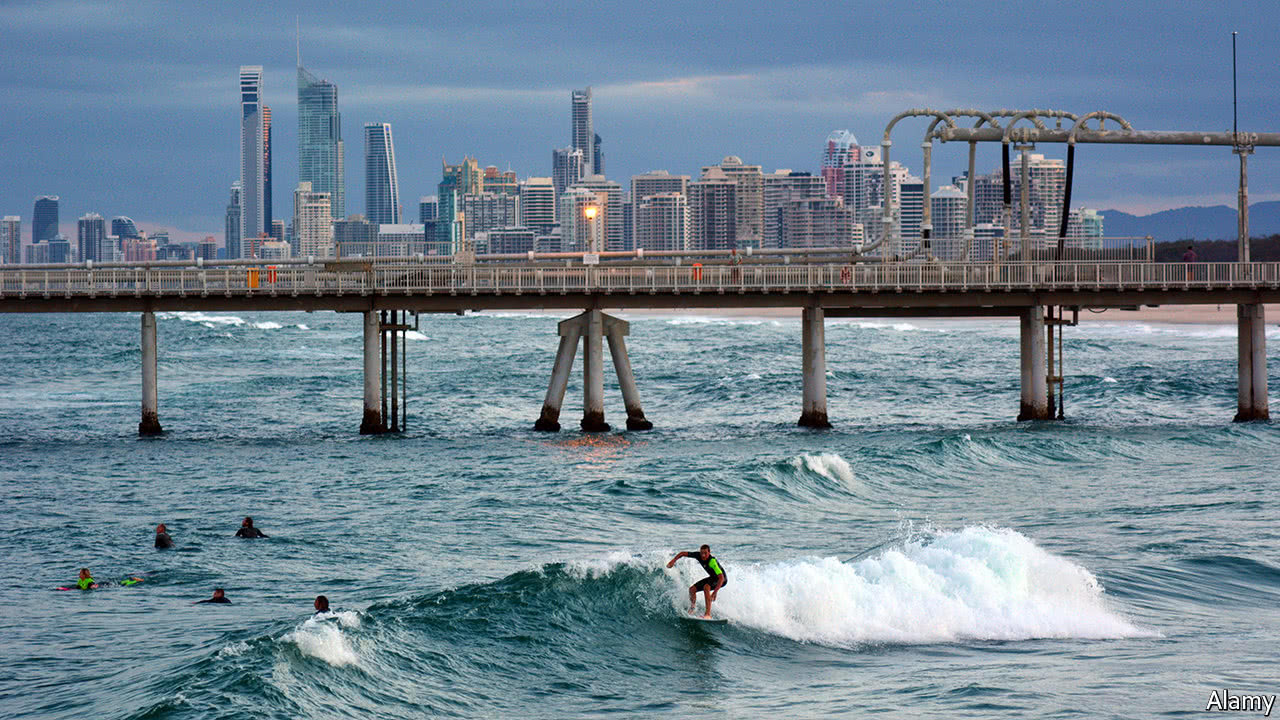How Australia broke the record for economic growth
Twenty-six years and counting

THE last time Australia suffered a recession the web browser had just been invented and Bryan Adams topped the charts. Figures released today will show that its economy has racked up the longest stretch of growth in modern history: 104 quarters. The Netherlands, the previous title-holder, dipped into recession—defined as two consecutive quarters of contraction—after 103. In these 26 years, Australia has navigated the Asian financial crisis, the collapse of the dotcom bubble and the Great Recession, largely without scars. Its once-in-a-generation mining boom ended in 2014. Yet it has managed to avoid a bust. How did it break the record for economic growth?
Its success was built on the structural reforms of the 1980s and ’90s, when trade barriers crumbled and foreign-exchange controls were removed. A floating dollar cushioned the economy against external aches; inflation stabilised around a target band of 2-3%; and government finances greatly improved. By the time the global financial crisis hit, Australia had enjoyed over a decade of budget surpluses and net debt had been eliminated. It helped that China’s demand for commodities was fuelling a mining boom that created jobs and pushed up wages. Australia’s terms of trade soared as it churned out coal and iron ore to feed its neighbour’s factories. By 2013 household incomes were about 13% higher than they would have been without the bonanza.
History suggested that the rush would be followed by a bust. As prices and investment fell, debt and unemployment rose in resource-dependent parts of the country like Queensland and Western Australia. But the Reserve Bank responded by slashing cash rates to lows of 1.5%, where they have remained for the past year, allowing the diverse economies of Victoria and New South Wales to pick up the slack. A weaker currency boosted agricultural exports and drew students and tourists in growing numbers. Cheap loans and rapid population growth prompted an explosion in demand for housing. Last year Australia’s population swelled by 1.6%, over double the average of the OECD, a group of mostly rich countries. To accommodate its intake of foreign migrants, Australia must build a city roughly the size of Britain’s Birmingham every five years.
The luck seems set to continue. The central bank predicts that GDP growth will pick up to about 3% in the next couple of years. But families have reason to feel less optimistic.
Unemployment rates have flat-lined above their equivalents in America, Britain and Japan.
Underemployment (the number of people who would like more work) is close to record highs.
Rising national income is not trickling down to workers: wage growth has fallen to about 1.9%, its slowest pace since the last recession.
This is all the more uncomfortable because household debt has ballooned. Its ratio to GDP is close to 190%, one of the highest in the world. If the central bank raises interest rates, many families will have difficulties repaying their mortgages. For now, it is likely to do nothing—and the growth will go on.
0 comments:
Publicar un comentario